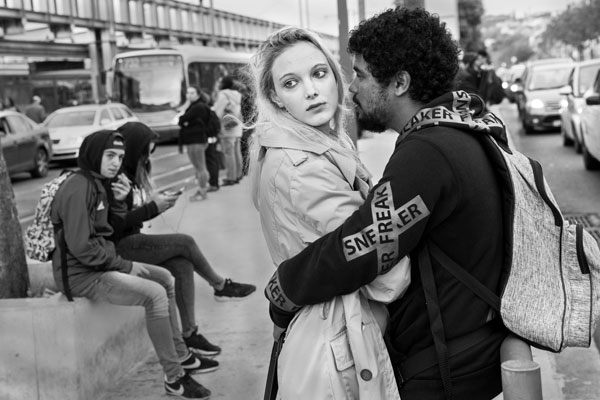The Single Strategy To Use For Framing Streets
Table of ContentsThe Single Strategy To Use For Framing StreetsUnknown Facts About Framing StreetsGet This Report about Framing StreetsFraming Streets Things To Know Before You BuyNot known Facts About Framing StreetsThe 5-Minute Rule for Framing Streets
, usually with the objective of recording pictures at a decisive or touching moment by cautious framing and timing. https://davidturley33101.wixsite.com/my-site/post/framing-streets-mastering-the-art-of-street-photography.
The Ultimate Guide To Framing Streets
Susan Sontag, 1977 Road photography can concentrate on people and their actions in public. In this respect, the street professional photographer is similar to social docudrama photographers or photographers that likewise function in public locations, yet with the objective of capturing newsworthy occasions. Any of these professional photographers' photos may catch individuals and home visible within or from public locations, which often entails browsing moral concerns and laws of privacy, protection, and home.
Depictions of everyday public life form a genre in almost every duration of world art, starting in the pre-historic, Sumerian, Egyptian and early Buddhist art durations. Art taking care of the life of the road, whether within sights of cityscapes, or as the leading motif, appears in the West in the canon of the North Renaissance, Baroque, Rococo, of Romanticism, Realistic look, Impressionism and Post-Impressionism.
The Ultimate Guide To Framing Streets
Louis Daguerre: "Boulevard du Temple" (1838 or 1839) In 1838 or 1839 the initial photo of numbers in the street was videotaped by Louis-Jacques-Mand Daguerre in one of a pair of daguerreotype views drawn from his studio home window of the Boulevard du Temple in Paris. The 2nd, made at the elevation of the day, shows an unpopulated stretch of road, while the various other was taken at concerning 8:00 am, and as Beaumont Newhall reports, "The Blvd, so continuously filled up with a relocating crowd of pedestrians and carriages was completely solitary, except an individual who was having his boots brushed.
, that was motivated to take on a comparable paperwork of New York City. As the city established, Atget helped to promote Parisian streets as a worthwhile subject for digital photography.

7 Easy Facts About Framing Streets Shown
Martin is the initial taped photographer to do so in London with a masked electronic camera. Mass-Observation was a social research organisation established in 1937 which aimed to tape-record day-to-day life in Britain and to videotape the reactions of the 'man-in-the-street' to King Edward VIII's abdication in 1936 to wed separation Wallis Simpson, and the succession of George VI. The principal Mass-Observationists were anthropologist Tom Harrisson in Bolton and poet Charles Madge in London, and their initial report was generated as the book "May the Twelfth: Mass-Observation Day-Surveys 1937 by over 2 hundred observers" [] Window cleaner at Kottbusser Tor, Berlin, by Elsa Thiemann c. 1946 The post-war French Humanist College professional photographers located their subjects on the street or in the diner. Between 1946 and 1957 Le Groupe des XV every year exhibited work of this kind. Andre Kertesz. Circus, Budapest, 19 May 1920 Road digital photography developed the major material of 2 exhibitions at the Museum of Modern Art (Mo, MA) in New york city curated by Edward Steichen, 5 French Photographers: Brassai; Cartier-Bresson, Doisneau, Ronis, Izis in 1951 to 1952, and Post-war European Photography in 1953, which exported the idea of street photography globally.

Everything about Framing Streets
, then a teacher of young kids, connected with Evans in 193839.'s 1958 book,, was substantial; raw and commonly out of focus, Frank's images questioned traditional photography of the time, "challenged all the official guidelines laid down by Henri Cartier-Bresson and Walker Evans" and "flew in the face of the wholesome pictorialism and genuine photojournalism of American magazines like LIFE and Time".